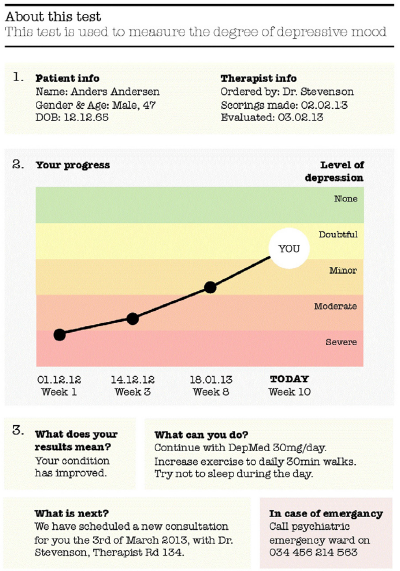No CrossRef data available.
Article contents
EPA-1522 - A Personalized Patient Page
Published online by Cambridge University Press: 15 April 2020
Abstract
A patient page is a document describing a disease in easy-to-understand, layperson's terms. It is considered important in motivating patients and their relatives to engage in treatment. Patient pages are distributed widely in many areas of health care and typically present general information about a disease and its treatment.
We believe that the value of a patient page would be improved, if the information was placed in the context of the patient's personal clinical data. We call this a personalized patient page.
The idea of a personalized patient page is fairly new, and until now it has not been applied to the treatment of persons with mental illness. With this in mind, we developed an example of a personalized patient page for a fictional patient with depression (see sample page). When the page is implemented in the clinic, we envisage that it would be generated automatically when results from an examination are recorded in the patient's file. Furthermore, the page could be delivered to the patient's e-mail inbox or smartphone application, and the page could have an interactive design. For example, if the patient wishes to clarify or know more about ‘minor depression,’ he or she would click on that term and the relevant information would be displayed.
We predict that implementing a personalized patient page in the treatment of persons with mental illness will promote patient engagement in treatment, motivate patients to take responsibility, and lead to greater satisfaction with patient-doctor communication.
(Published in Psychiatric Services, October 2013. Figure 10.1176/appi.ps.018120130)

- Type
- P38 - Others
- Information
- Copyright
- Copyright © European Psychiatric Association 2014





Comments
No Comments have been published for this article.